Last-Minute NYC Holiday Gift Guide 🎁
We’ve created a holiday gift guide with presents for the intrepid New Yorker that should arrive just in time—


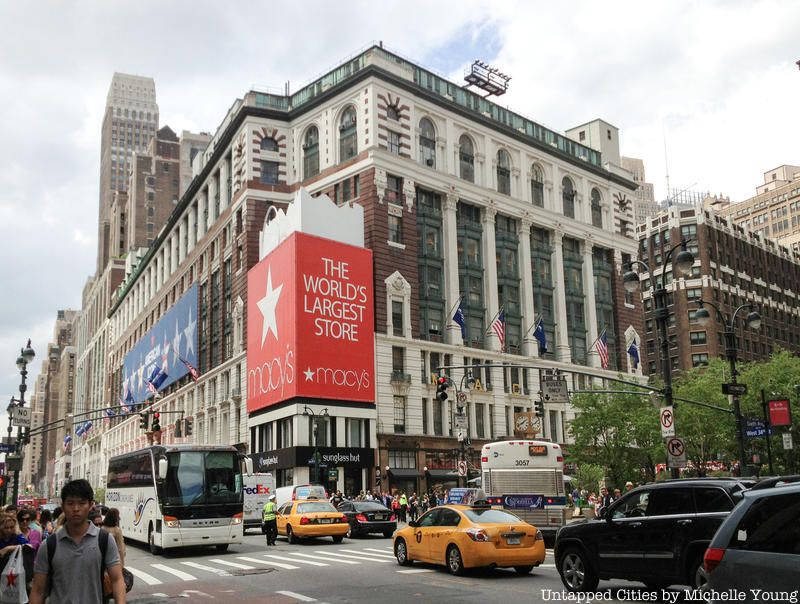
Today, we take a look at some of New York City’s most notable holdout buildings – those buildings that refused to be demolished in the face of oncoming development and remain today, curiously and sometimes incongruously in the urban landscape.

1908. Photo from Library of Congress.
Recently, the giant shopping bag at the front of Macy’s made its way onto our Daily What?! series. Well, really we mean the building covered by the Macy’s bag, a holdout building that forced Macy’s to build around rather than over it. But it wasn’t so much that the building owner refused to move, as he was holding the corner unit hostage hoping to force Macy’s to give up its earlier location on 6th Avenue and 14th Street. Macy’s called the bluff, so the owner demolished the building and replaced it with a 5-story building on which Macy’s started advertising on in 1945. Even today, it’s still owned by a separate entity from Macy’s, the Rockaway Company.
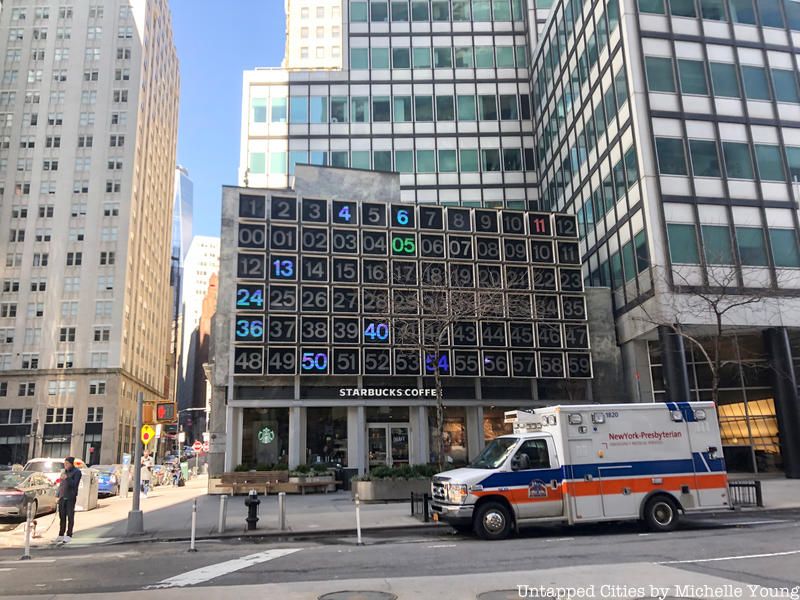
The typical holdout story is of the little guy standing up against the big developer but sometimes holdout buildings are just the result of bad decisions. 200 Water Street is the result of one such miscalculation. The building owner Robert Ardston miscalculated how high a price he could get for his five-story building. With negotiations at an impasse, William Kaufman, the developer of 127 John Street, decided to make the best of the situation. Kaufman carved out the section of his building that wrapped around the holdout buildings and added a touch of whimsy, commissioning a giant digital clock to screen the holdout underneath.
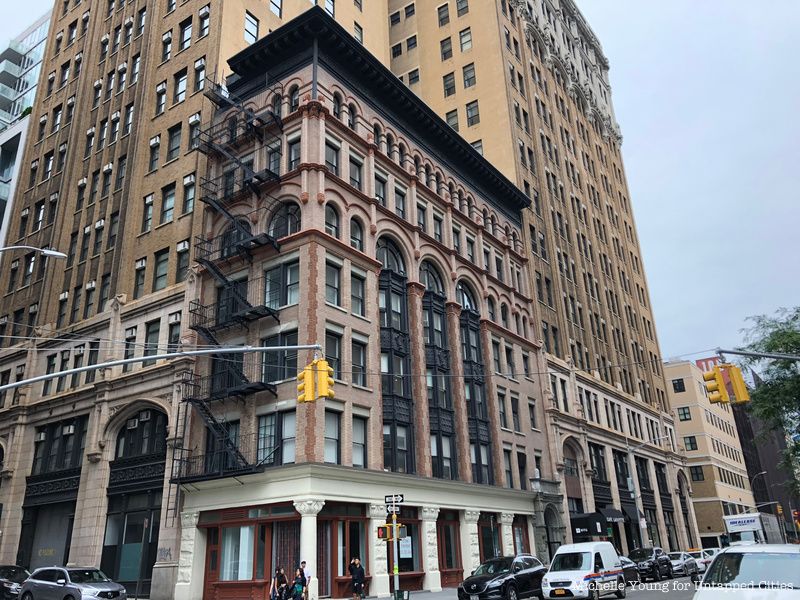
Sometimes, just being the popular kid on the block is enough to guarantee a building’s existence. With eating establishments occupying the ground floor since its’ opening in 1896, 70 Lafayette Street was a popular lunch spot for the nearby City Hall municipal employees. This gave the building owner sufficient ground to successfully stand up to the 17-story building, now one of NYU’s residential halls, forcing the L-shaped wrap around that exists today.
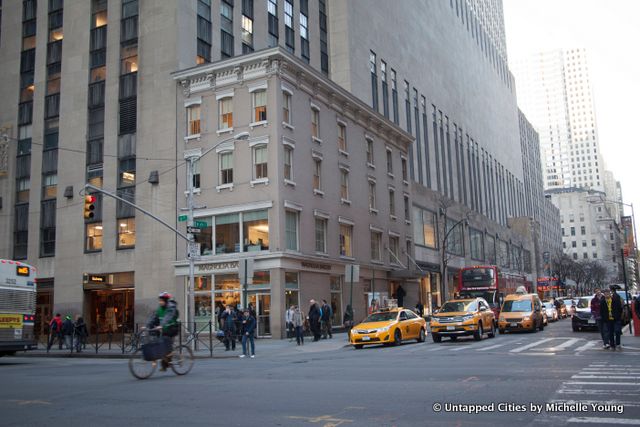
Sixth Avenue’s “Skyscraper Alley” in Midtown is an almost unending stream of International style buildings. The 19-building complex at Rockefeller Center stands at the center of all this, where the flourishes of Art Deco meet the functional lines and geometric simplicity of the International movement. In the midst of the Great Depression, most landlords were pleased or at least amenable to Rockefeller’s offers to buy the land, except for the owners of the two townhouses on either end of 30 Rock.
A Magnolia bakery currently occupies the former Hurley’s, a bar and saloon that opened in the 1890s and later became a famed watering hole for the media industry, ironically based largely in Rockefeller Center. The saloon had also operated successfully through Prohibition where the ground level flower shop led to the more popular speakeasy below. The three Hurley brothers were hardly fazed by Rockefeller, asking for an absurdly high sum to underscore their refusal to leave. As one Hurley said “I’ve seen sonofabitchin’ Rockefellers come and sonofabitchin’ Rockefellers go and no sonofabitchin’ Rockefeller’s gonna tear down my bar.” Less theatrical but equally firm in his refusal to leave, John Maxwell simply refused to negotiate at all, whether in seriousness or not.
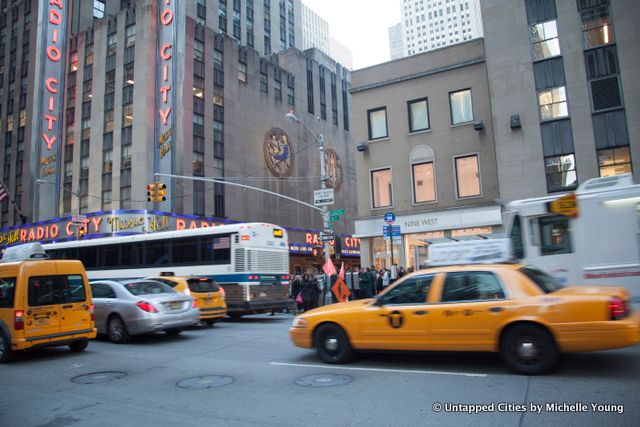
Forced to build above and around the two townhouses, the 70-story 30 Rockefeller Plaza remains sandwiched between two three-and-four story structures that are now perhaps the city’s most famous holdout buildings. See them on our upcoming Secrets of Rockefeller Center Walking tour!
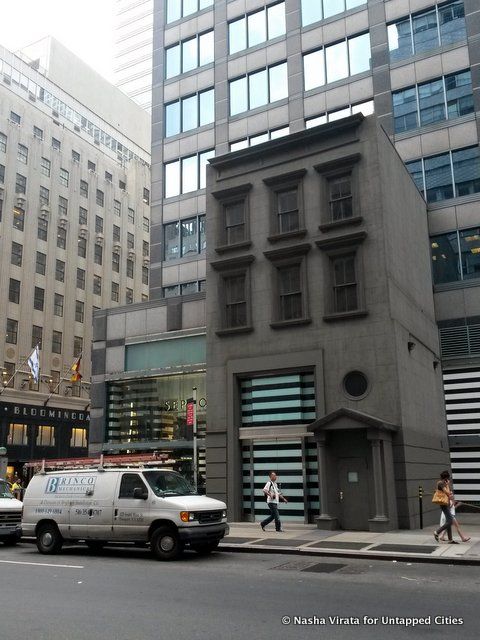
This four-story townhouse sits across Bloomingdale’s, protruding
from the side of a 31-story office tower on East 60th Street near Lexington Avenue. A memorial to one of New York City’s best-known holdout battles, the former townhouse had been converted to five rent-stabilized apartment units by the 1980s.When the developers began construction, four of the five tenants moved out. The fifth, Jean Herman, refused. She believed the developers had a responsibility to find her a suitable replacement, a new apartment that had both the neighborhood appeal and affordability of East 60th St. The developers, unable to meet her request, decided to build around the townhouse, even shaving off the fifth floor, above Ms. Herman’s unit. Ms Herman quickly became a neighborhood favorite and continued to live there until her death in the 1990s. Today, most people who walk by don’t notice this townhouse holdout, as retailers have found ways to make it seem like a continuation of the office tower.
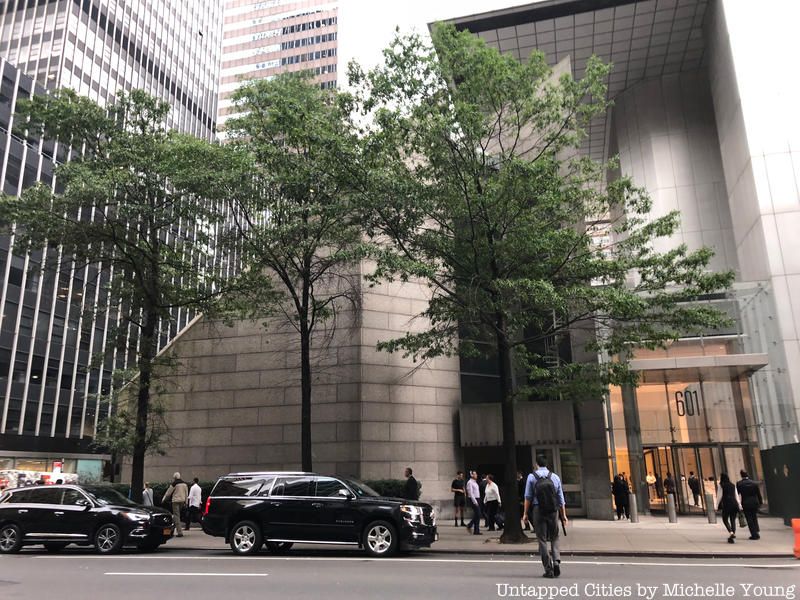
We’ve listed the atrium inside the Citigroup building as one of our top Midtown indoor public spaces. On the outside though, exists a holdout that in some sense, isn’t a holdout at all. St. Peter’s Church, now at the northeast corner of Lexington Avenue and 54th Street actually owned the lot of the current Citigroup building and wanted to sell the land. They planned to use the profits to build a new church on less valuable real estate. Unable to find a suitable location, St Peter’s Church returned to the original site.
Citigroup’s solution was to build a new church on the corner and construct their offices around and above it. A 72-foot cantilever floats above the church, with the skyscraper itself supported by the four columns alongside the church. A major design oversight however resulted in a serious and potentially fatal engineering flaw. The engineers and Citigroup management worked together in secret to rectify this, narrowly missing the potential damage of an incoming hurricane. This flaw remained a secret until the New Yorker ran a 1995 article detailing the danger faced by the engineers and the unknowing office goers. The story broke almost 17 years after the building was erected.
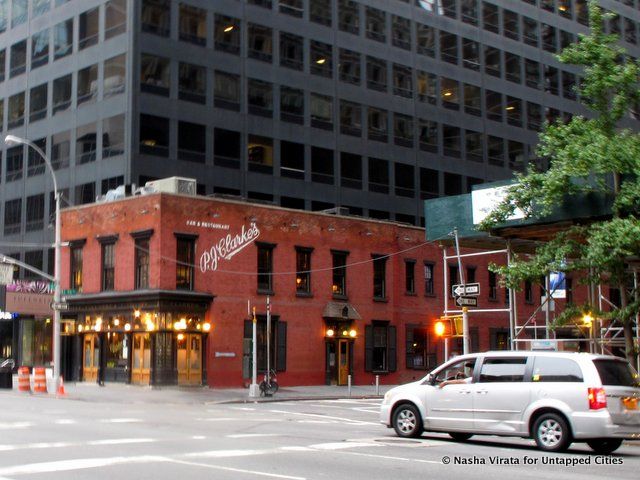
P.J. Clarke’s has been a New York cultural institution since it opened in the 1860s. Celebrities such as Frank Sinatra, who claimed Table #20 for himself, Jackie Onassis, Nat King Cole, Johnny Depp flocked to the restaurant. P.J. Clarke’s reputation as a local institution began long before and lasted beyond its popularity with the celebrity set.
As the Third Avenue El came down, real estate prices soared and Third Avenue saw an influx of new developments. The family who owned the restaurant, the Lavazzos, refused to sell. In an unexpected twist, Tishman Realty, the developers responsible for the adjoining skyscraper, decided they too wanted to preserve the restaurant, and made plans to build around it, allowing the restaurant to continue operating.
P.J. Clark’es makes an appearance in our articles on 15 Vintage NYC Restaurants, Bars and Cafes, our Mad Men Guide to NYC, 10 of the Oldest Surviving Bars in NYC, and classic film locations in NYC.
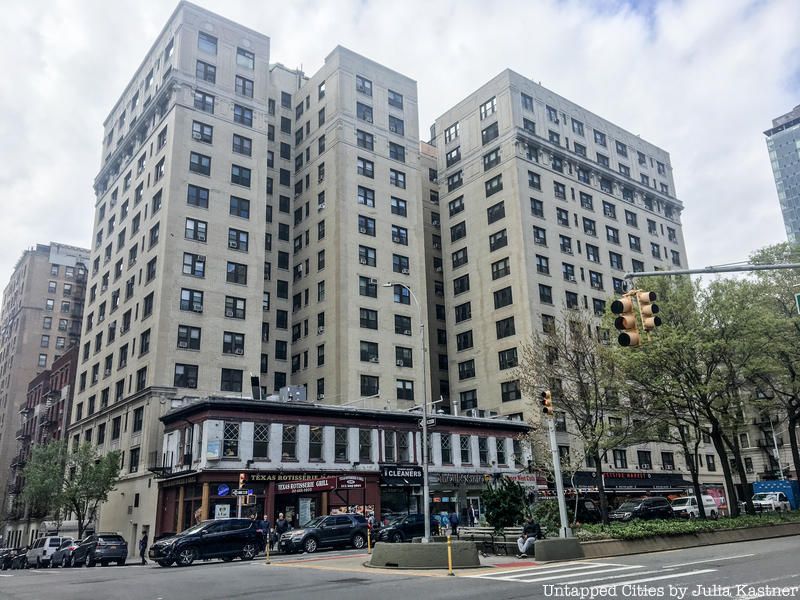
An open-air restaurant named after one of Berlin’s major avenues is an unexpected find in New York in the first place. It gets even more surprising when one sees this two-story building still standing strong at the corner of Broadway and West 97th Street, almost entirely enveloped by a fourteen-story block wide housing complex.
While the restaurant has long gone, the building remains. Occupied by Sleepy’s (pictured above) and then Westfield Market, the building is currently undergoing renovations to its facade, shadowing the distinctive bungalow on Broadway and West 9th Street.
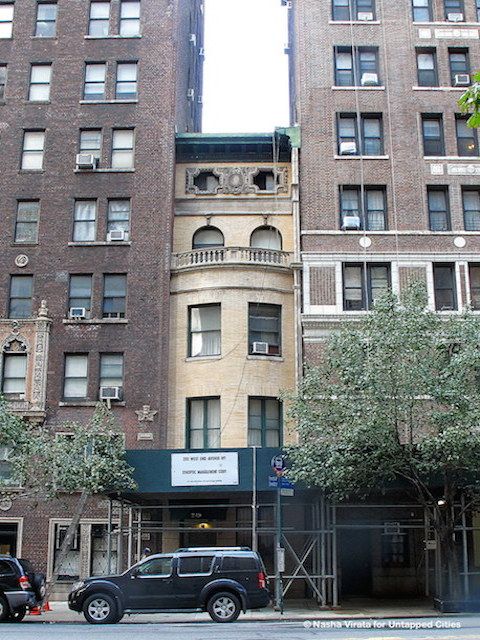
West End Avenue and the surrounding neighborhood is full of unexpected surprises, from hidden housing complexes to NYC’s smallest park. Holdout buildings from various periods and styles can be found on West End Avenue. 249 West End Avenue is only one example. The remaining one of four near-identical townhouses lining this West End Avenue block, the house belonged to Mary Cook. She repeatedly declined offers to sell the house, despite the changing landscape and new high-rise apartments that eventually made up the entire block.
In the 1930s, the Continental Club based their headquarters here. The Club also housed the Uptown Gallery, where contemporary and up-and-coming artists often had their earliest shows, Mark Rothko being a notable artist of the Gallery.
Next, check out the latest holdout building we found in Harlem!
If you are interested in learning more about New York City holdout buildings, you can read Andrew Alpern and Seymour Durst’s book Holdouts! The Buildings that Got in the Way. For more architectural curiosities, check out these 8 buildings that have been literally moved in NYC!
Subscribe to our newsletter